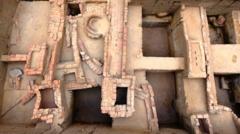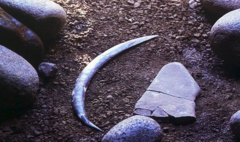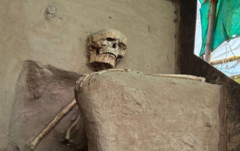Rakhaldas Banerjee, a notable figure in archaeology, rediscovered the Indus Valley Civilization but remained overshadowed by historical disputes and controversies.
The Overlooked Genius: Rakhaldas Banerjee and His Impact on Indus Valley Archaeology

The Overlooked Genius: Rakhaldas Banerjee and His Impact on Indus Valley Archaeology
Remembering the remarkable yet controversial life of the Indian archaeologist Rakhaldas Banerjee.
Rakhaldas Banerjee, an Indian archaeologist, remains a distant memory despite his groundbreaking discoveries in the early 1900s. He is celebrated for his role in uncovering Mohenjo-daro, the largest city of the ancient Indus Valley (Harappan) Civilization, which spanned a vast area from present-day Afghanistan to India during the Bronze Age. Mysteriously dubbed the "mound of the dead men," Mohenjo-daro revealed the rich history of a civilization that thrived over 5,300 years ago, yet Banerjee's accomplishments are often overshadowed by controversies that marred his career.
Working for the Archaeological Survey of India (ASI) in the colonial era, Banerjee embarked on several pioneering expeditions in search of ancient artefacts and texts. Despite the significance of Mohenjo-daro’s discovery, his contributions are disputed. Allegations surfaced against the ASI chief, John Marshall, who reportedly suppressed Banerjee's reports and claimed the discovery as his own. "The world knows Marshall discovered the civilization's ruins, and it is taught in institutions. Banerjee is an insignificant footnote," criticized archaeologist PK Mishra.
In her book, *Finding Forgotten Cities: How the Indus Civilization Was Discovered*, historian Nayanjot Lahiri emphasizes Banerjee's struggles in navigating the rigid protocols of British colonial rule. His assertive nature often clashed with authorities; he attempted to procure inscriptions from a museum without permission and relocated artefacts, ruffling the feathers of his superiors. She noted, "Banerjee's many talents seemed to include being always able to rub people the wrong way."
Born into privilege in Bengal, Banerjee gravitated towards history at a young age. His career blossomed when he joined the ASI as an excavation assistant in 1910, quickly climbing the ranks. By 1917, he was a superintending archaeologist, and it was during this period that he first explored Mohenjo-daro in Sindh in 1919. His findings included ancient seals, coins, and urban settlement layers that significantly contributed to our understanding of the Indus Valley Civilization, which spans approximately 386,000 square miles.
Although he unearthed crucial findings between 1922 and 1923, issues of funding and management plagued his projects. Financial disputes arose, leading to a transfer that prevented him from returning to Mohenjo-daro. By 1924, allegations of mismanagement and extravagant spending were levelled against him, prompting disciplinary action.
His alleged involvement in a sacred idol theft in 1925 further tarnished his reputation, despite the subsequent dismissal of the charges against him. Following his resignation in 1927 from ASI, he transitioned to academia, yet struggled financially due to his lavish lifestyle and died prematurely at only 45 in 1930.
Banerjee's achievements, particularly in relation to the Indus Valley Civilization, should be recognized with the reverence they deserve, allowing his legacy to transcend the shadows of controversy into the annals of history.




















